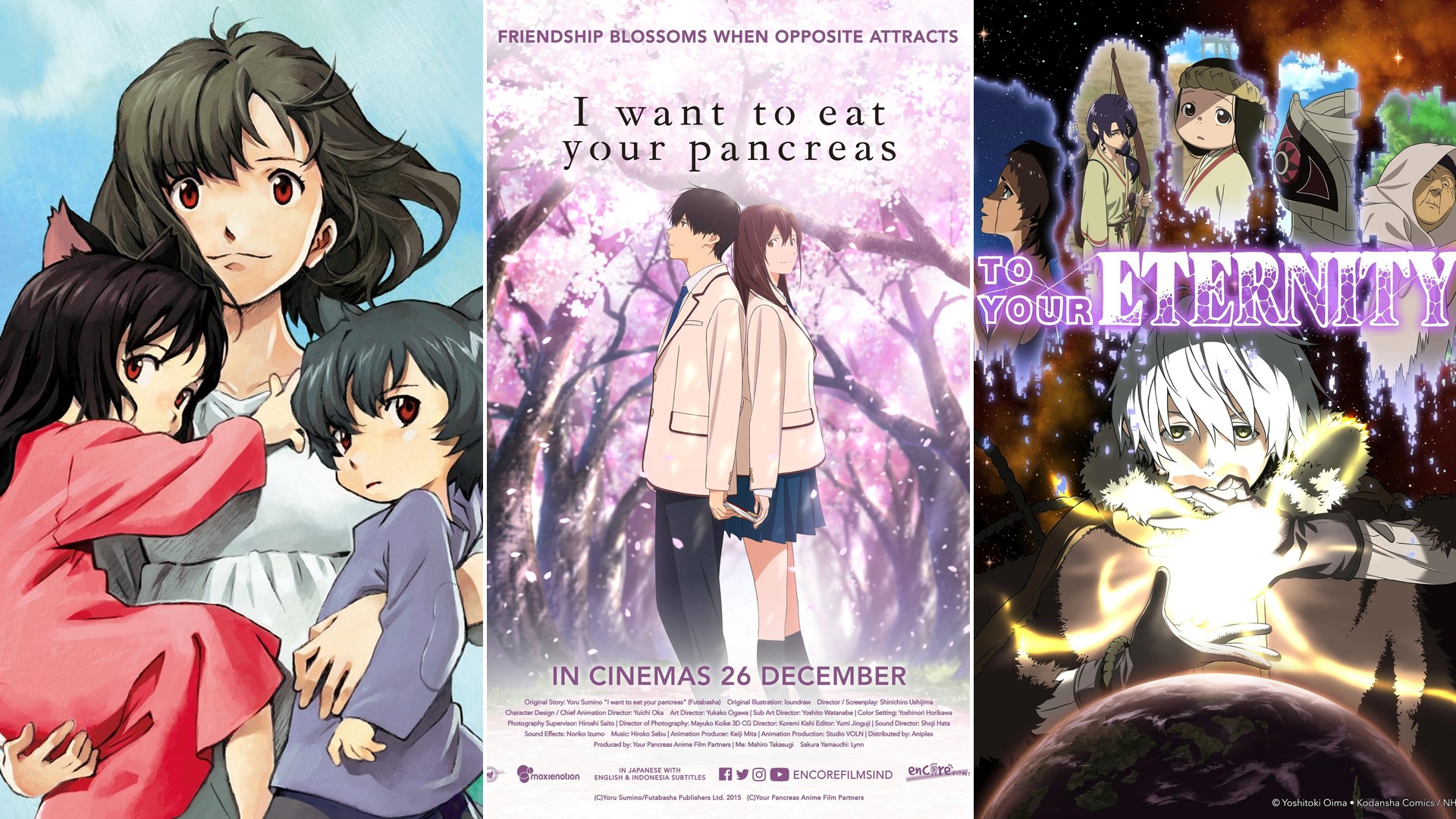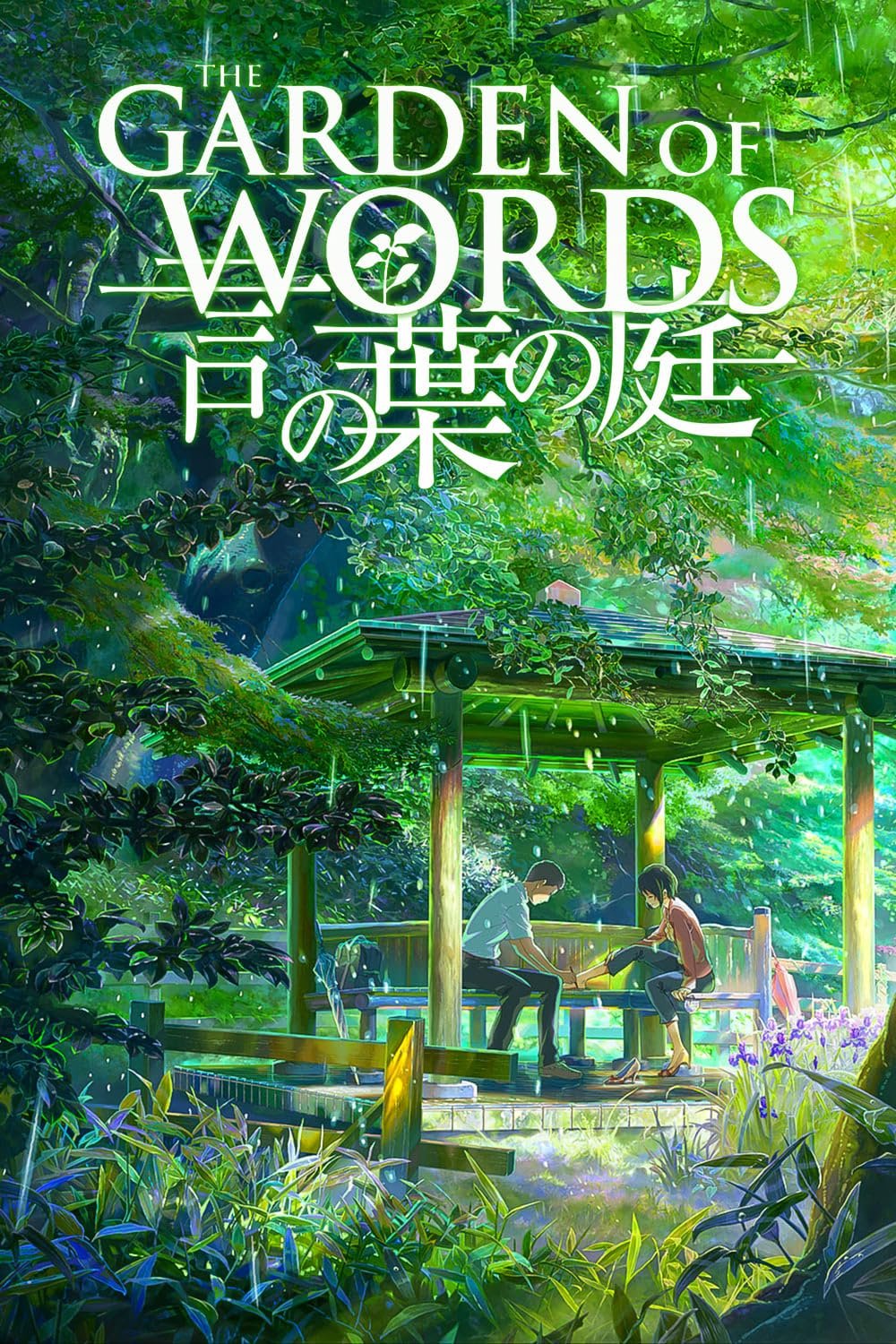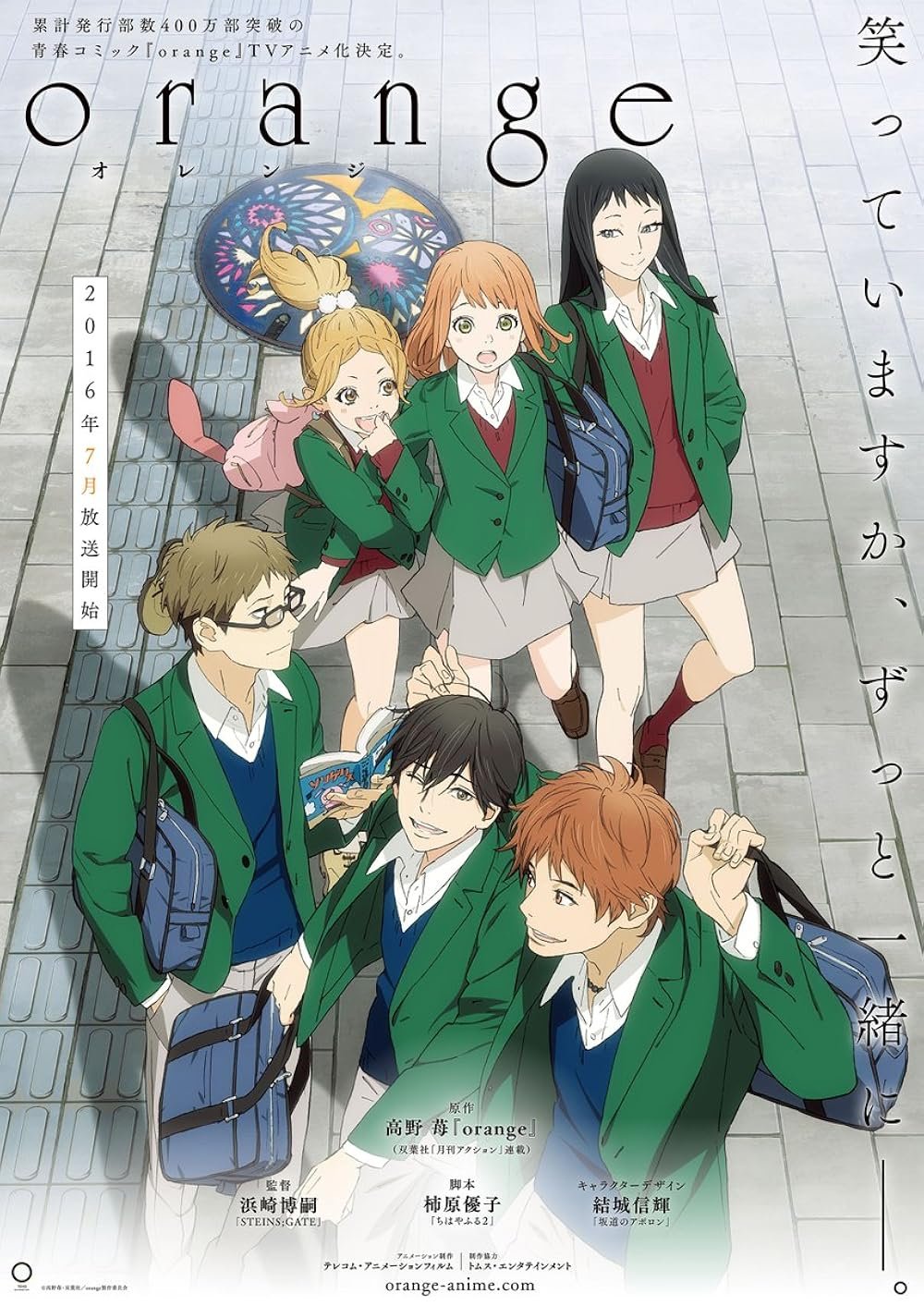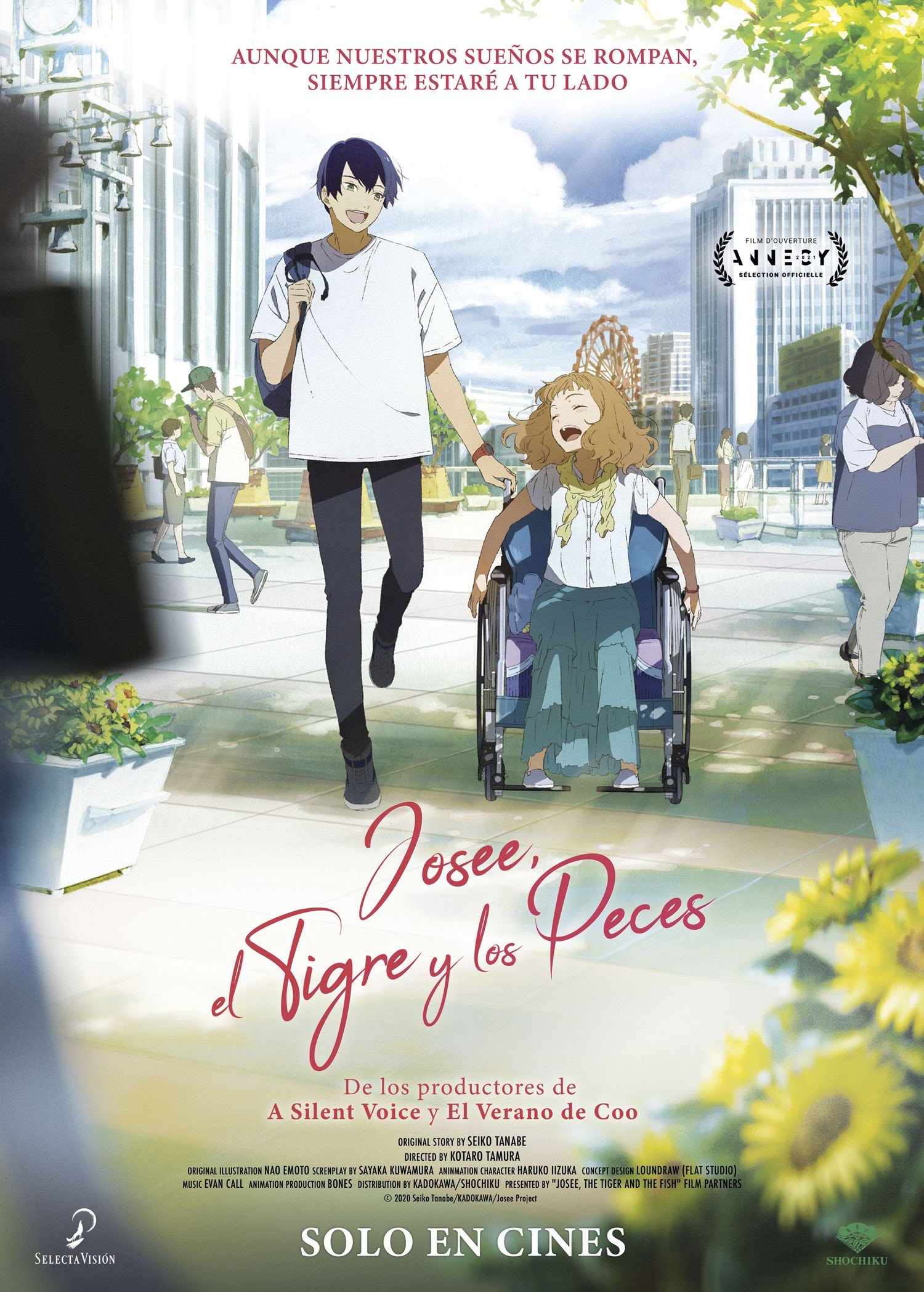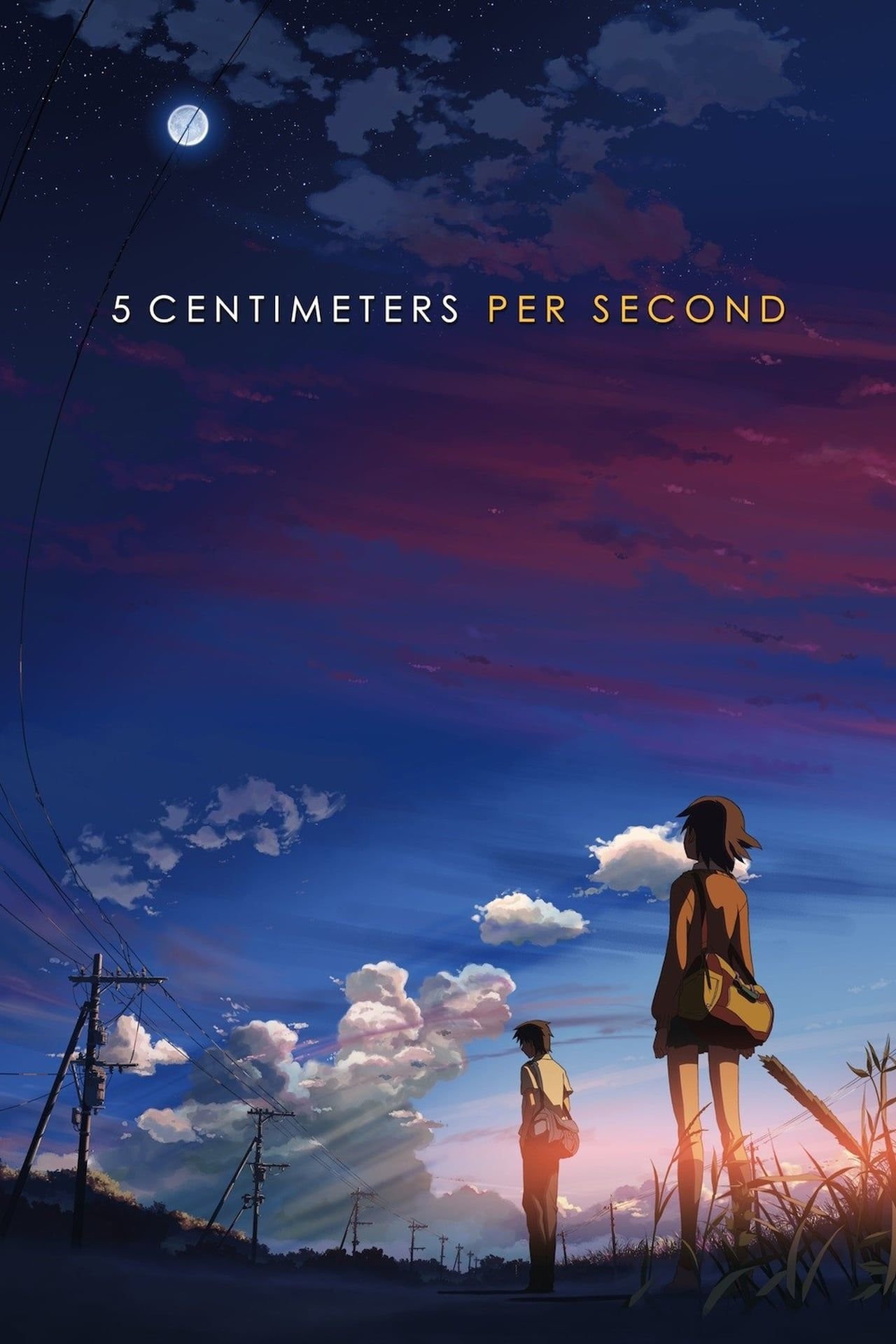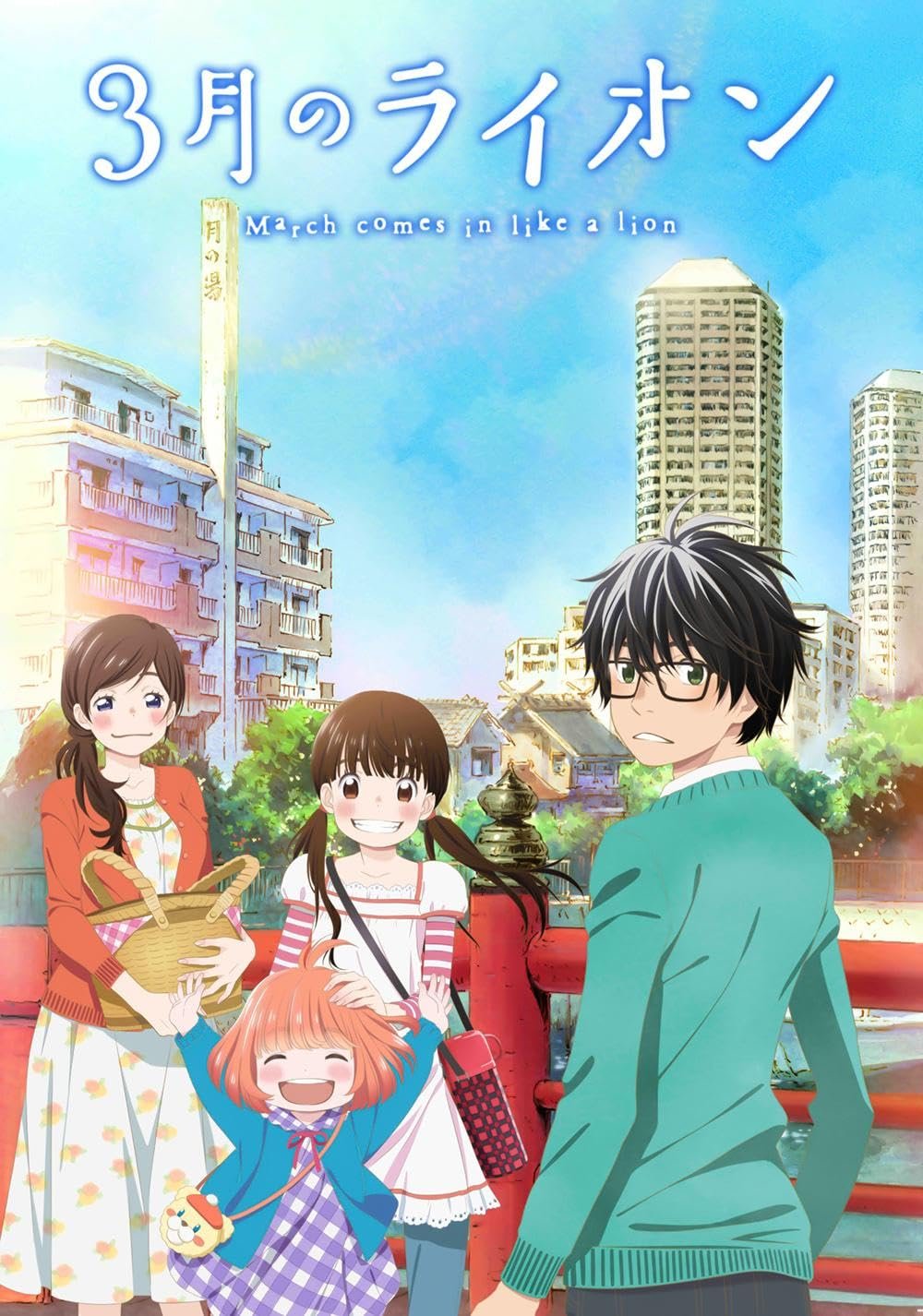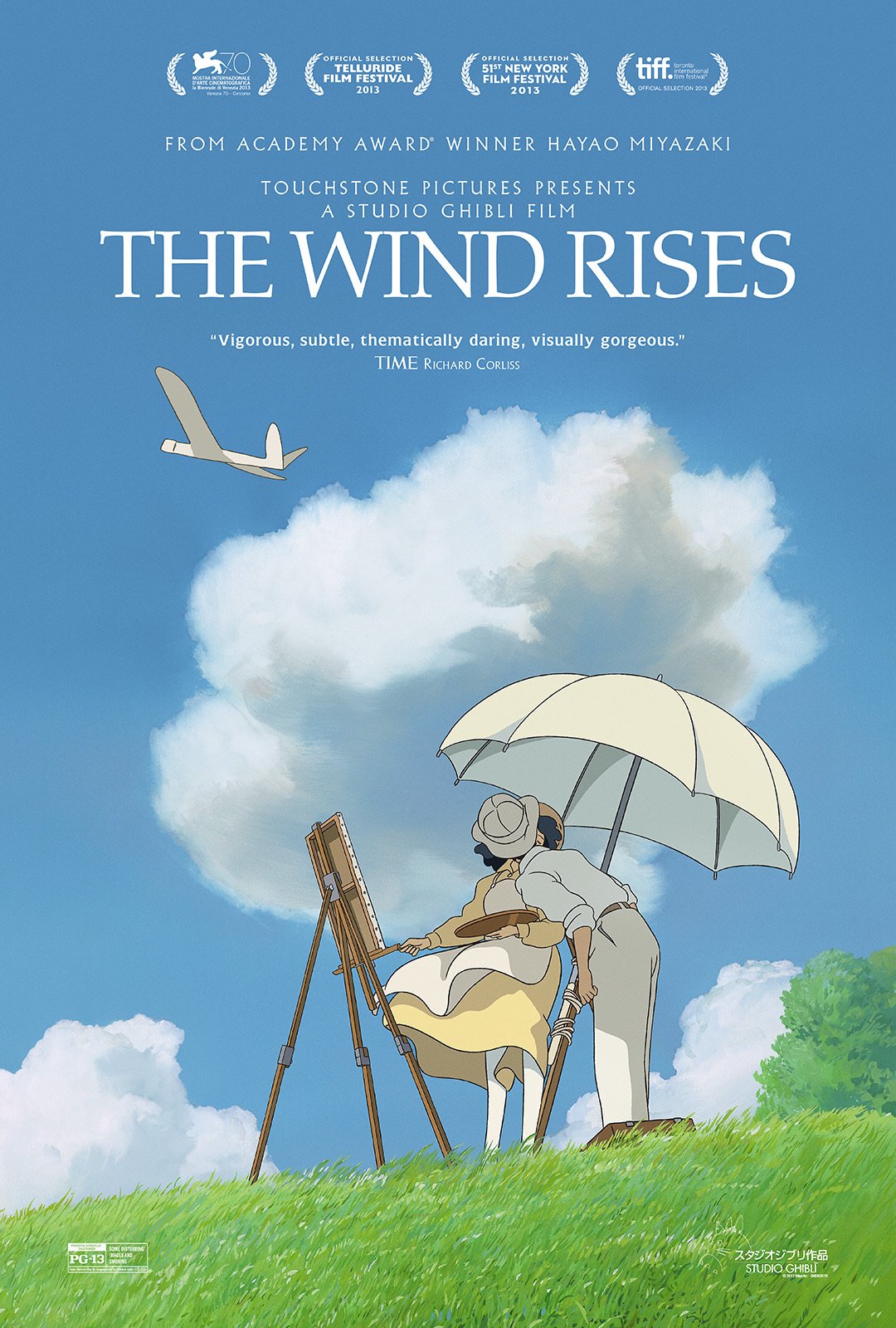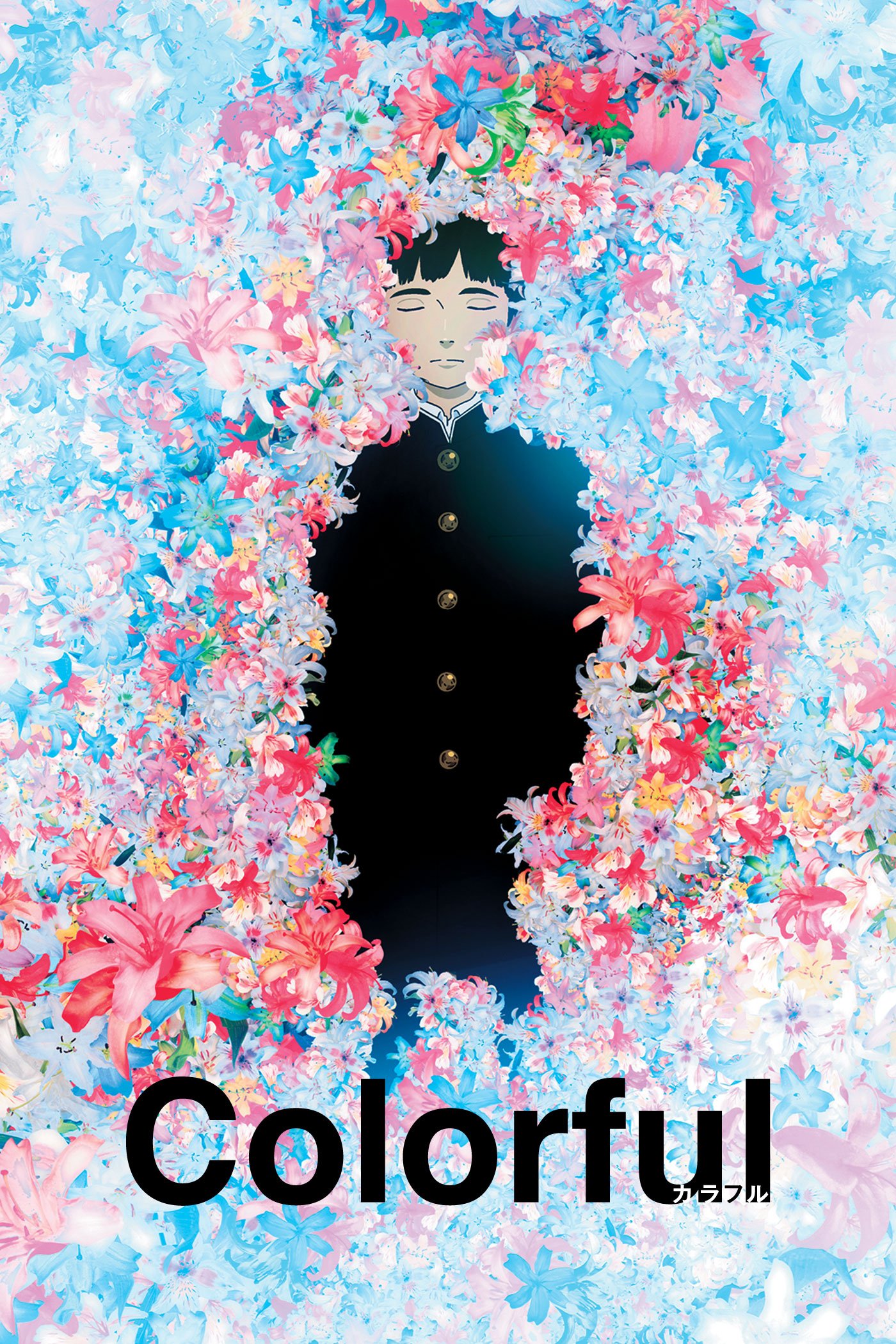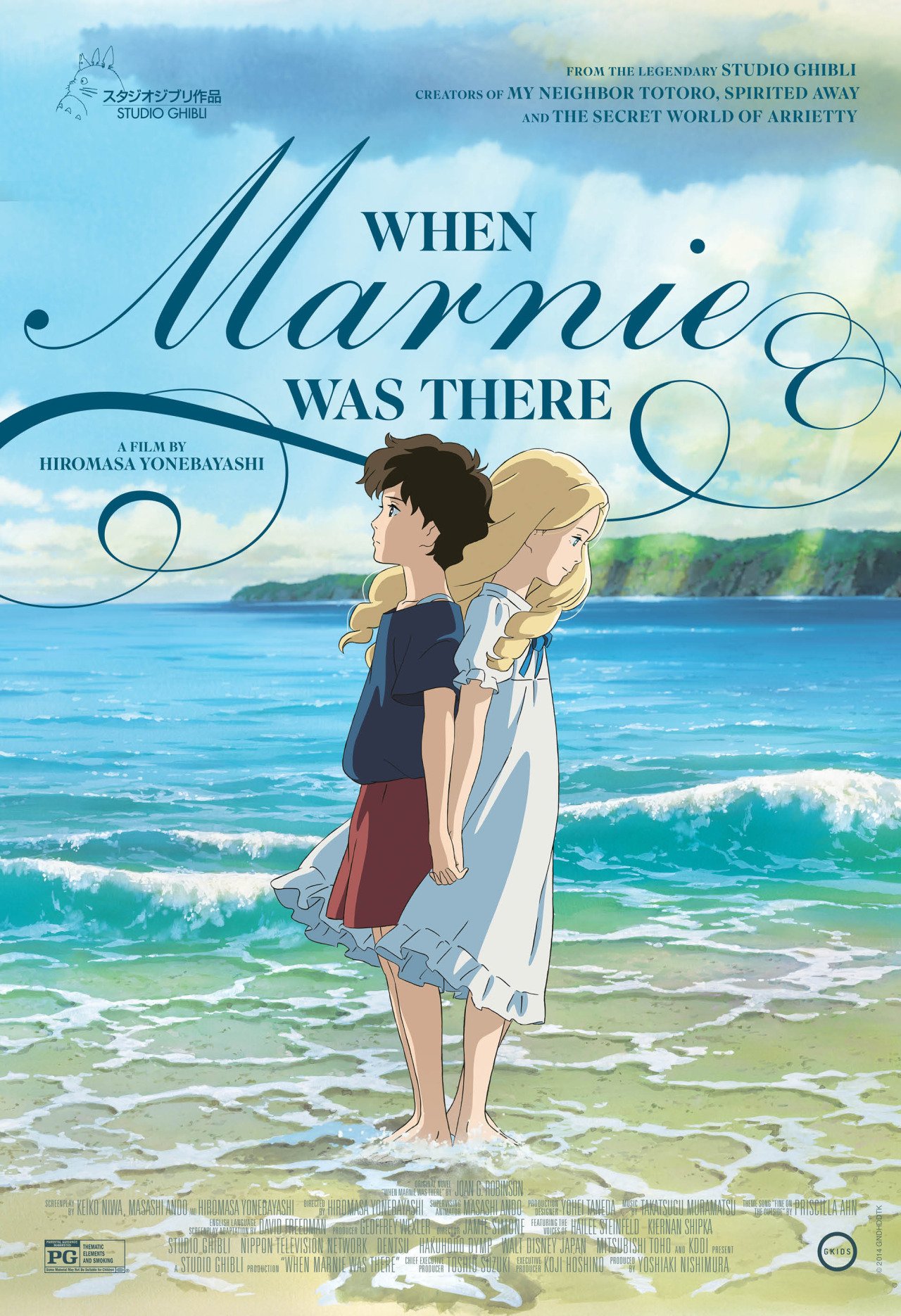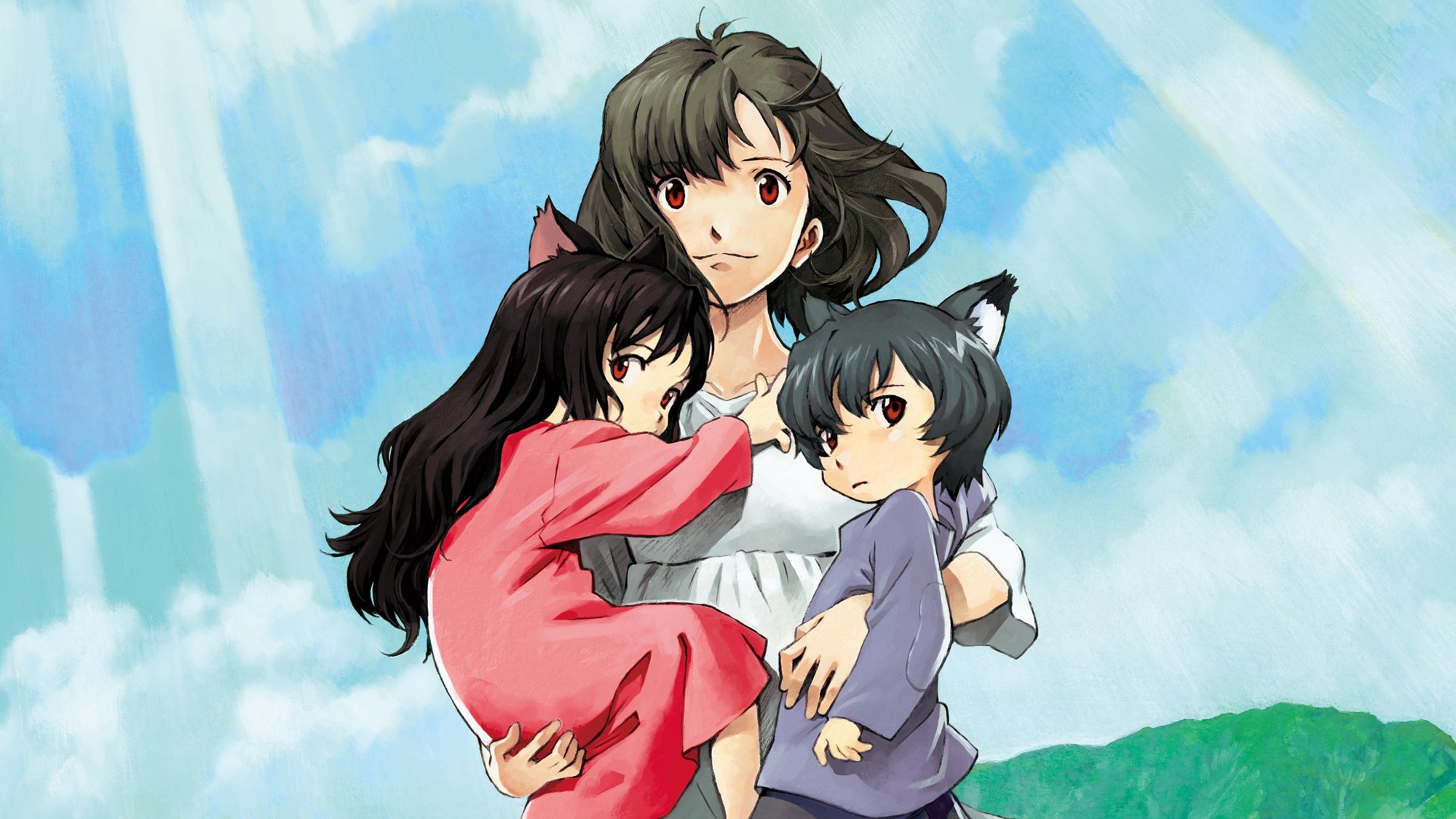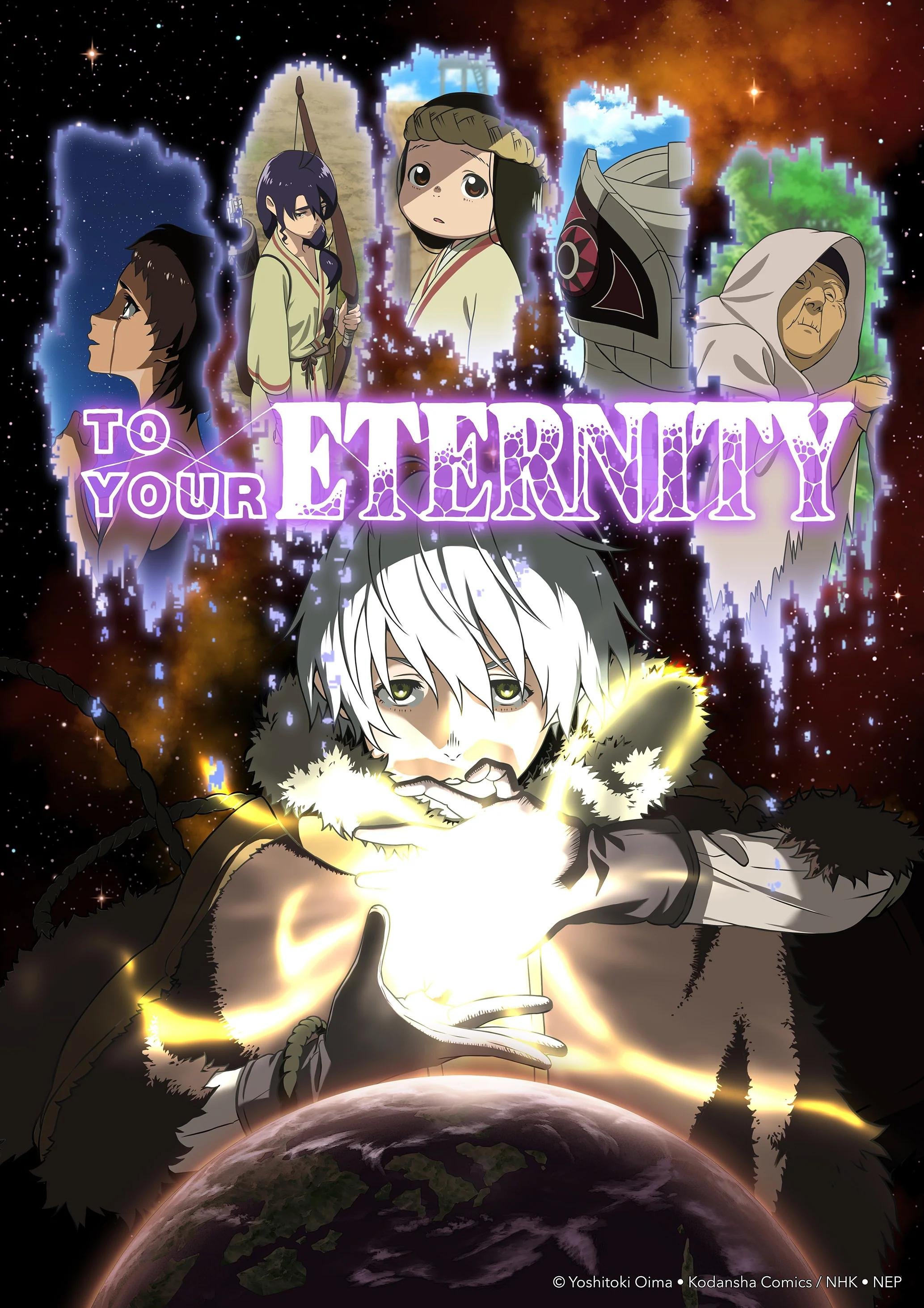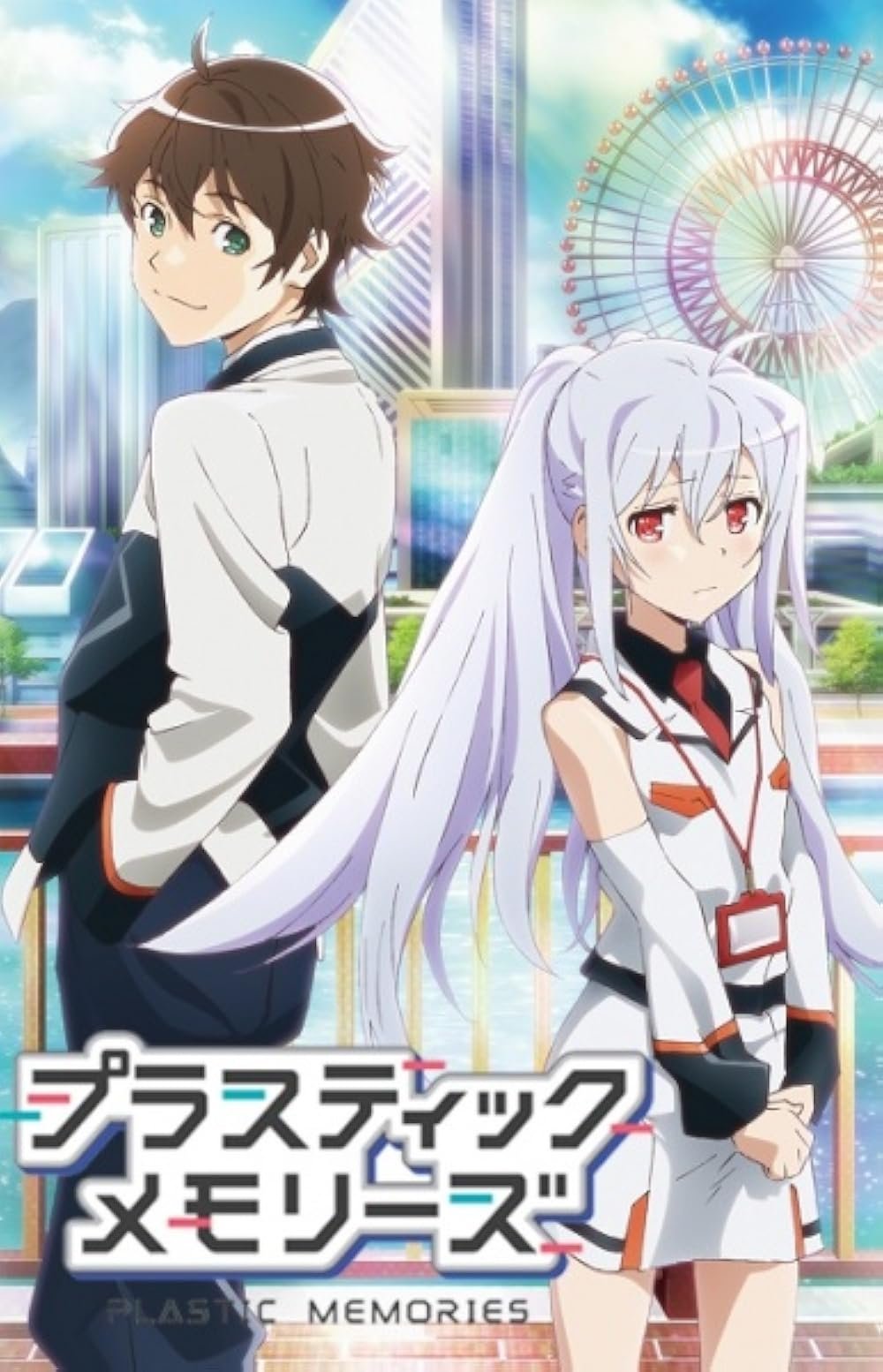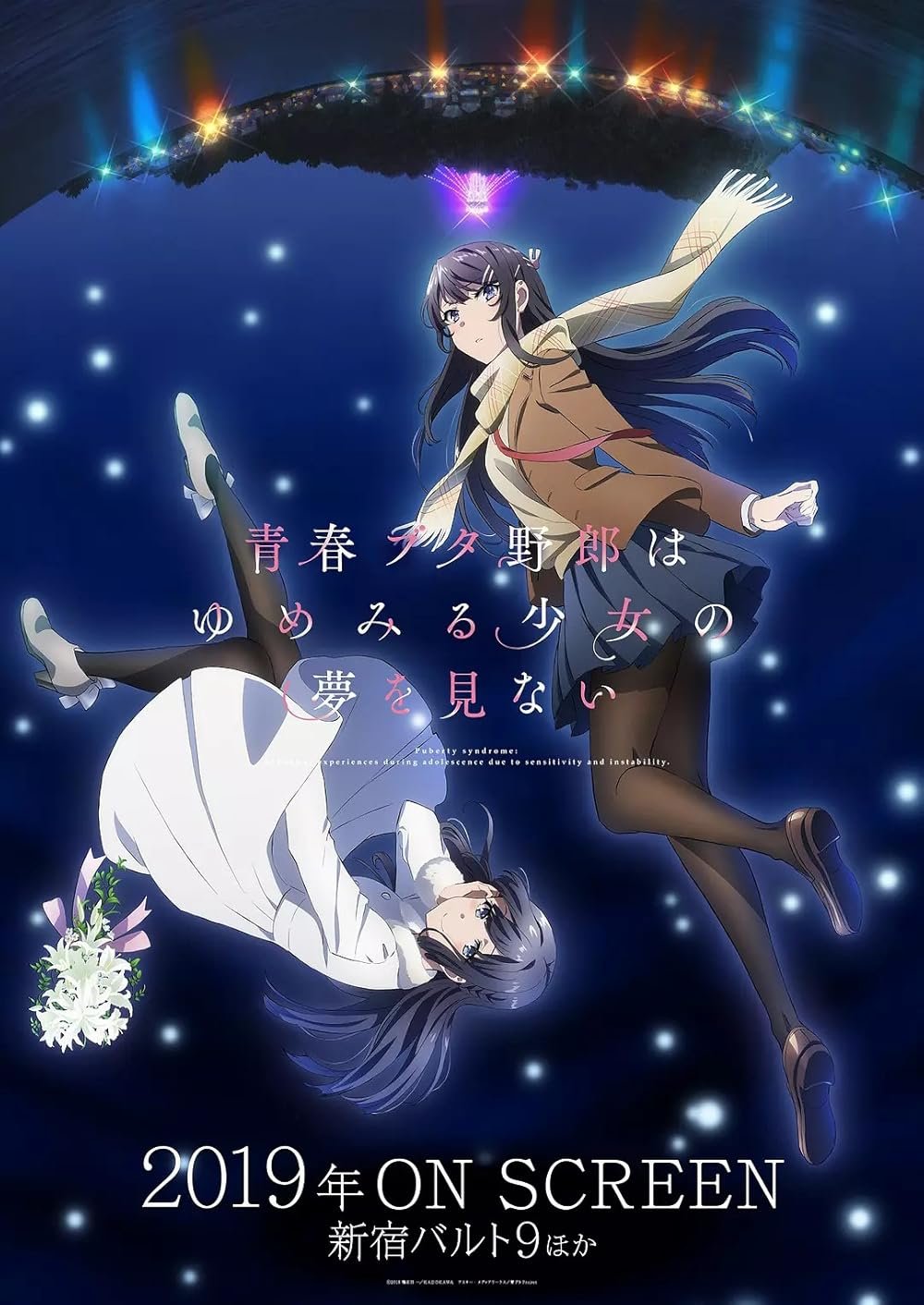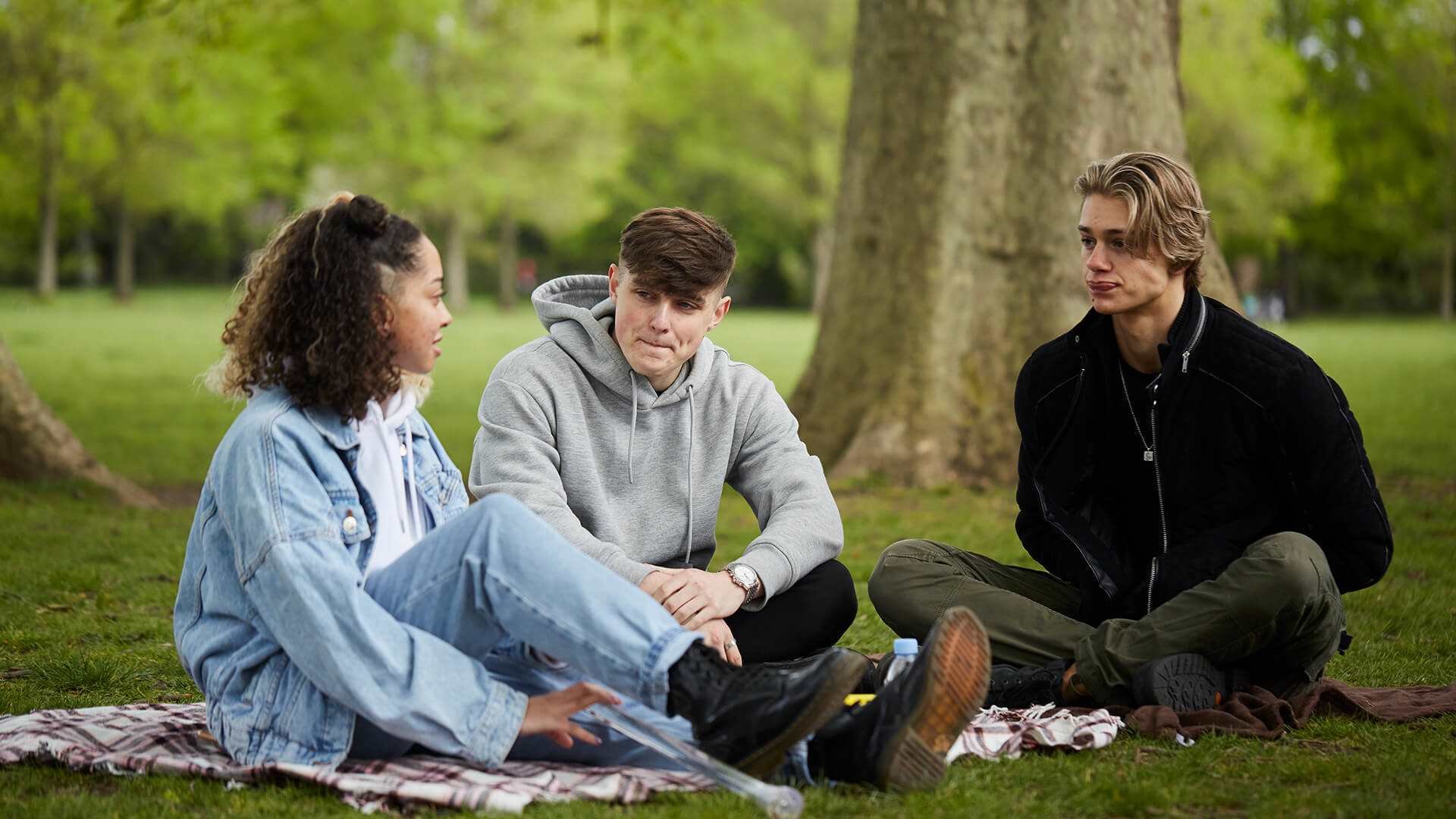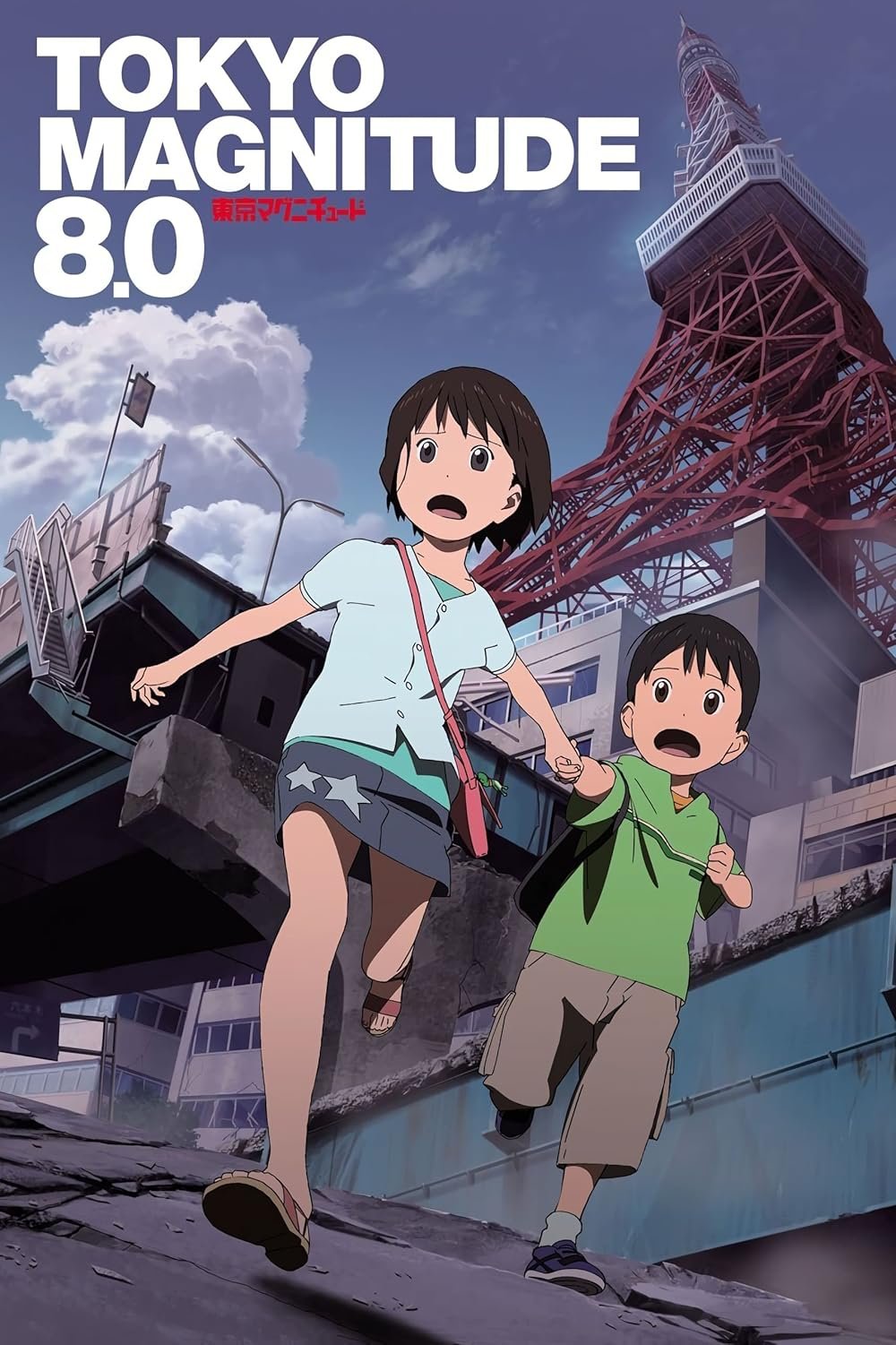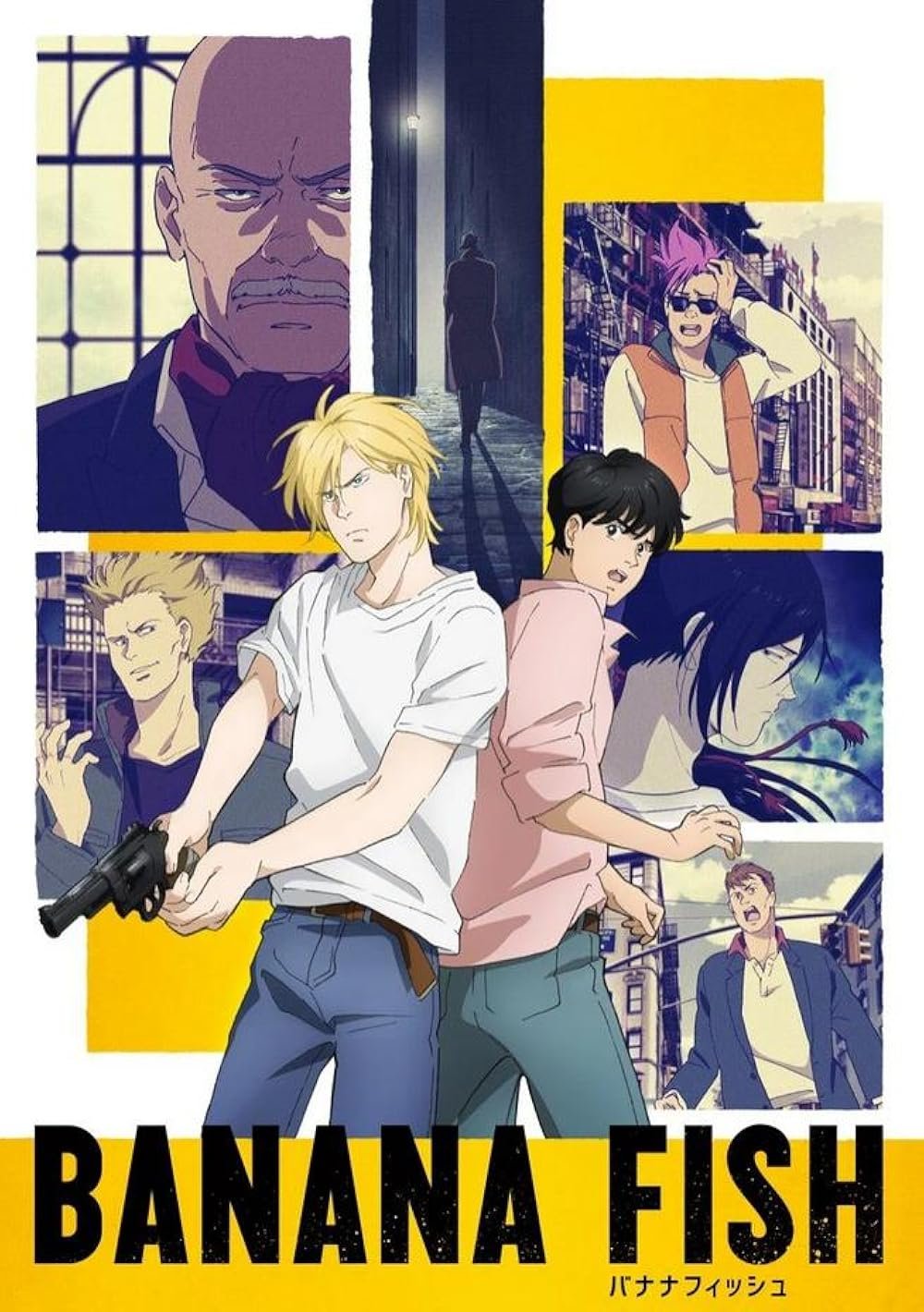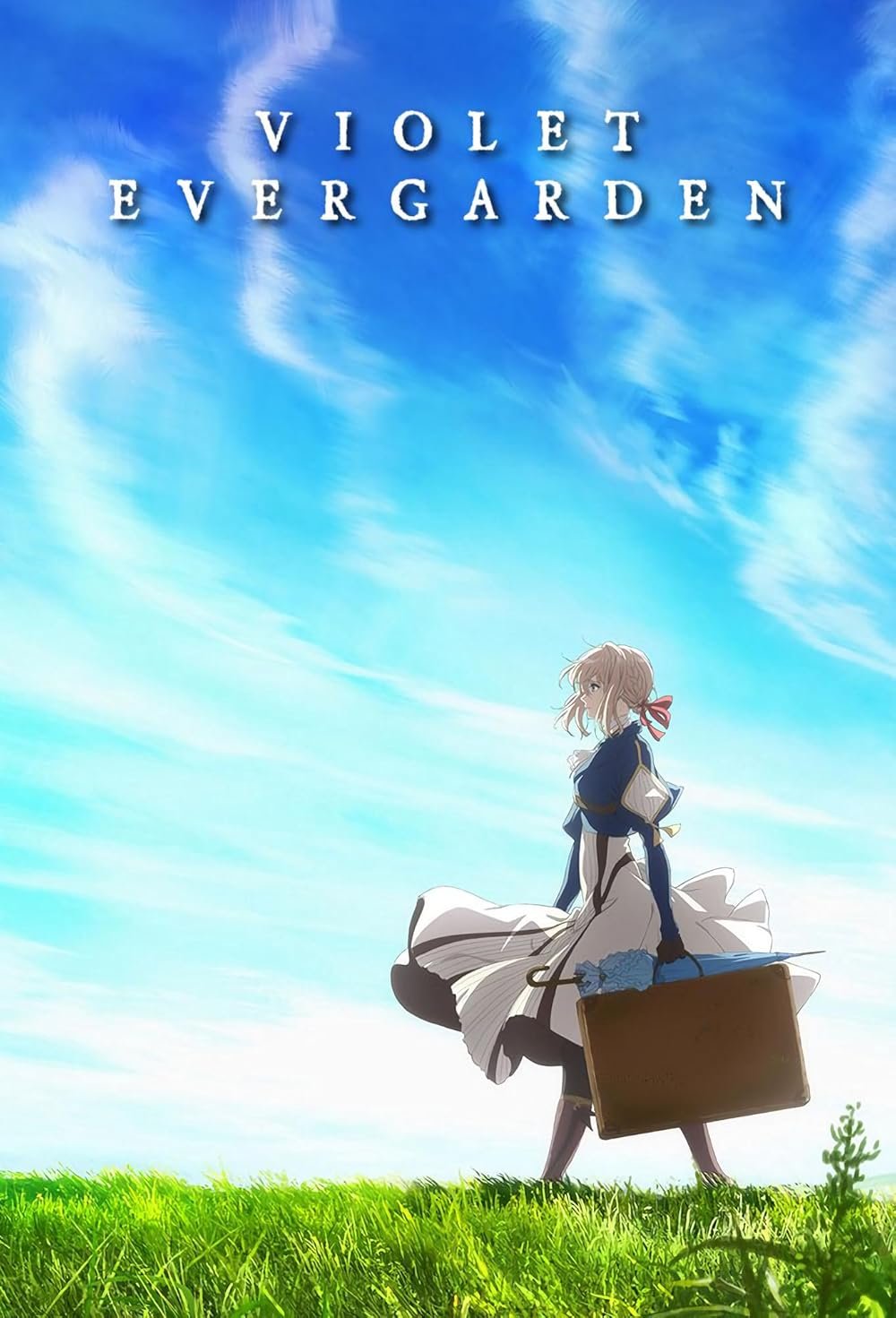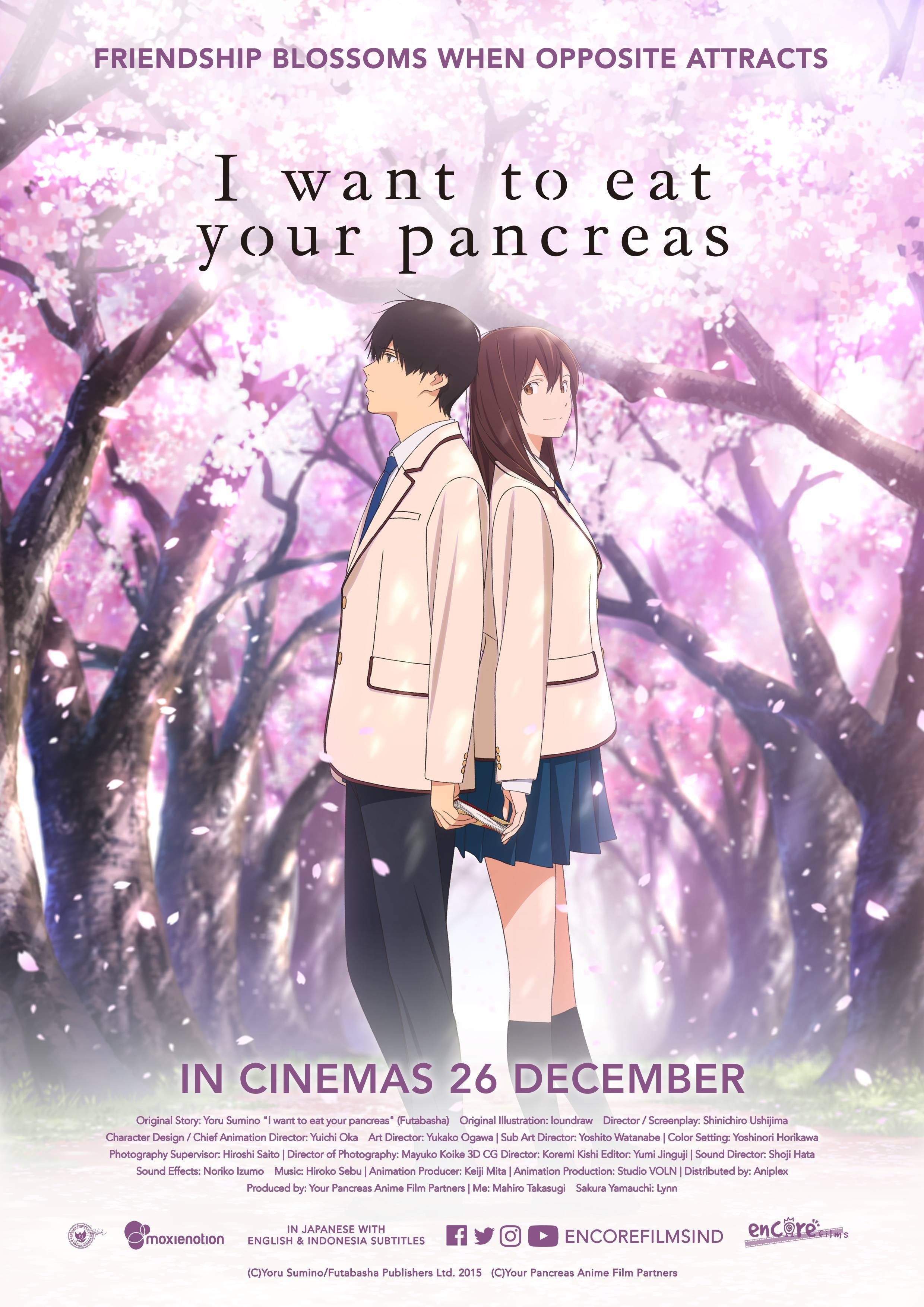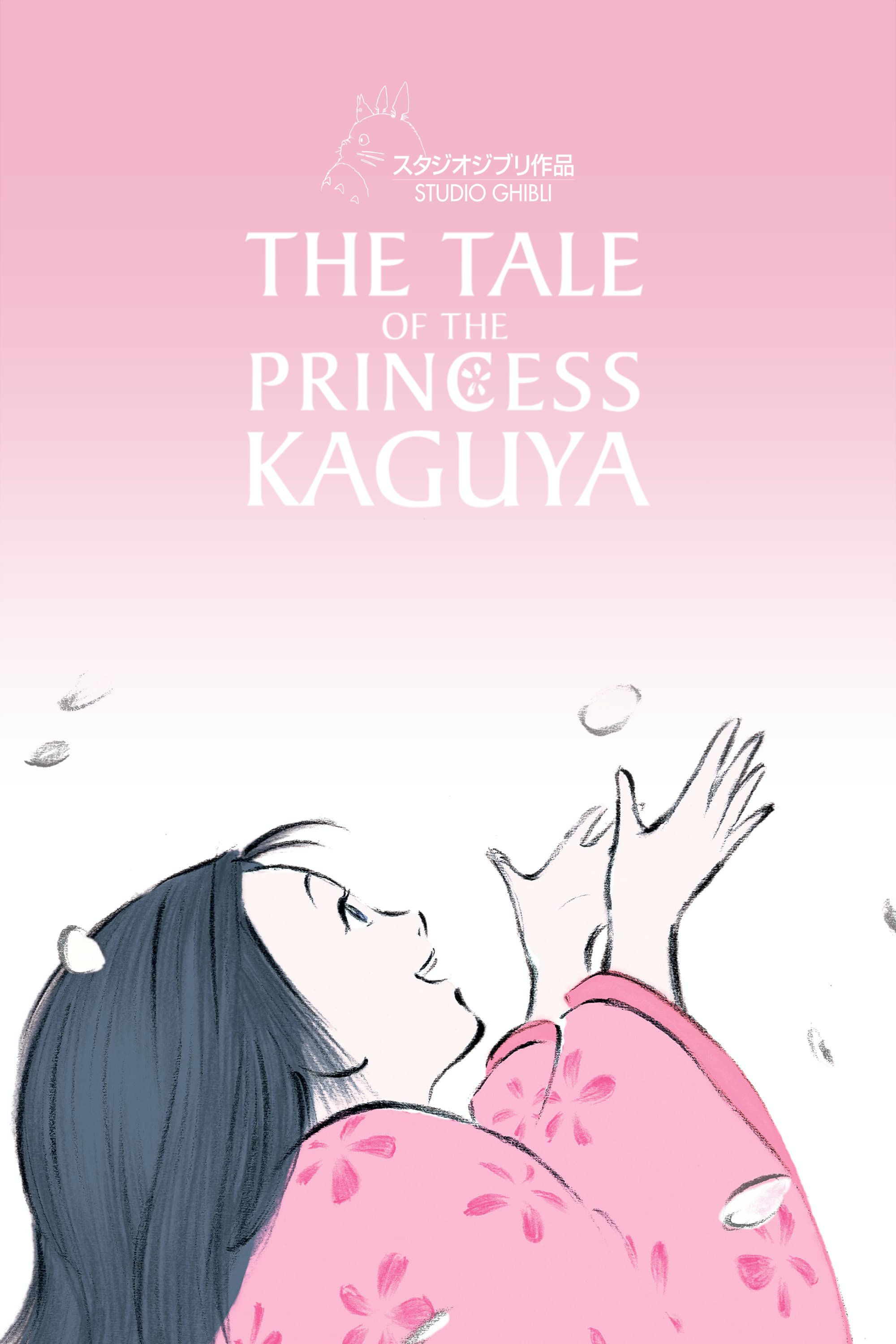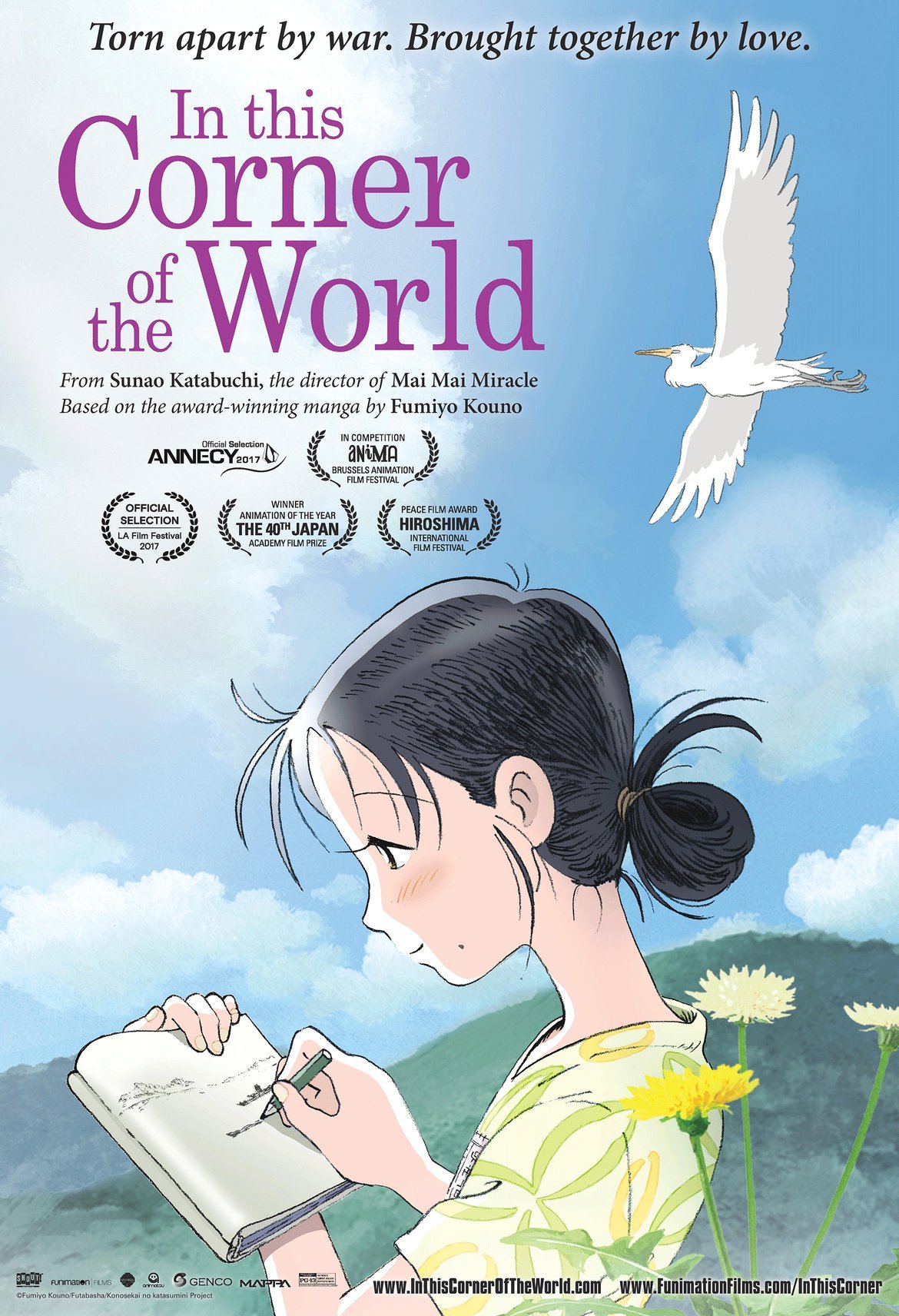These anime cut deep because they focus on loss, regret and hope in ordinary lives. Some are films, some are series, but each one earns its place by how honestly it handles grief and how lasting its impact is.
We count down from #25 to #1 to build toward the heaviest hitters. Expect quiet slice-of-life tragedies, historical sorrow and a few coming-of-age stories that hurt in a good way. None of this is easy viewing, but it is worth it.
#25 The Garden of Words
Makoto Shinkai’s short film lingers on rain-soaked mornings and a bond between a teen shoemaker and an older woman. The way Tokyo feels both crowded and lonely gives the story a soft, melancholic ache that stays after the credits.
More than romance, it is about solitude and the brief refuge people can give each other. The craft details, like designing a shoe, mirror their careful, tentative steps toward healing, even if they cannot stay together.
The ending is restrained, which makes the emotion sharper. Small gestures, a few words and the sound of rain carry the film’s heartbreak without big speeches and that restraint is what makes it hurt.
#24 Orange
Letters from the future ask a group of friends to watch over Kakeru, a boy struggling with depression. The show treats mental health with care, showing how simple acts can help and how silence can be dangerous.
What stands out is the circle of friends choosing to act. They learn that guilt can linger and that trying is not the same as fixing everything, but it still matters. The timeline device supports the message of second chances.
Romance and friendship thread through the story, yet the focus never strays from Kakeru’s pain. The series earns its tears by grounding big feelings in everyday school life and small, believable choices.
The final stretch pushes the characters to face what they fear most. It becomes a plea for reaching out early, when signs appear and for the value of showing up even when you are unsure what to say.
#23 Josee, the Tiger and the Fish
This film follows Tsuneo and Josee, a sharp-tongued young woman who uses a wheelchair, as they challenge each other’s limits. It is tender, not maudlin and the sadness comes from the fear of losing new freedom.
The art is warm and lively. It shows how independence can feel risky but necessary. The story values Josee’s own voice and dreams, which makes every setback and argument carry weight without turning her into a symbol.
It is not tragic for tragedy’s sake. The film argues that real care means pushing and listening in equal measure and that love must respect agency. The result is moving, with tears earned by growth.
#22 5 Centimeters per Second
Three linked chapters trace a young couple’s drift apart as time and distance pile up. Slow trains, quiet texts and missed chances build a portrait of how life can pass while you wait for a message that never comes.
The film’s beauty is a contrast to its emotional chill. It studies how memory edits itself and how a single winter night can define years. The final images accept that some paths close and that acceptance is bittersweet.
Shinkai’s focus on detail gives each moment a lived-in feel. The sadness is not loud. It lives in routines, what-ifs and the silence between people who once meant everything.
By the end, the story suggests that longing can become a habit. Breaking it takes courage, but even then, you carry a gentle, honest ache for what might have been.
#21 March Comes in Like a Lion
Rei is a teen shogi pro dealing with depression and isolation. The show’s power is how it balances hard subjects with warmth from the Kawamoto sisters, who offer food, patience and space to breathe.
The series treats bullying, grief and burnout with unusual care. Big matches matter less than the slow work of building a life you can live in. Small victories, like asking for help, feel huge here.
Visual metaphors make inner storms visible without overstatement. When sunlight breaks through, it is not a cure, but a reminder that comfort can return in small pieces.
#20 The Wind Rises
Miyazaki tells the story of Jiro Horikoshi, an engineer who dreams of elegant planes while war looms. The film holds two truths at once: beauty in craft and the cost of what that craft serves.
Jiro’s love for Nahoko, who is ill, gives the film its tender core. Their time together is brief and fragile and the final part lands as a quiet, inevitable sorrow.
Dream sequences with Caproni show how ambition can be bright and blinding. The sadness comes from realizing that even the most refined design cannot escape history.
It closes on reflection rather than judgment. What remains is the weight of choices and the memory of a love held under thin skies.
#19 Colorful
A lost soul wakes in the body of a boy who died by suicide. He is told to live his life and learn why it went wrong. The film looks closely at shame, family secrets and the quiet ways people suffer.
Nothing is easy here. The story walks through messy rooms, cramped trains and tight hallways as if mapping a mind. When grace appears, it is small and earned, not magical.
The title is a promise and a challenge. It asks whether life can be more than gray after betrayal and self-hate. The answer is careful and human, which is why the ending lands.
#18 When Marnie Was There
Anna meets Marnie near a marsh and finds a friend who understands her loneliness. Their connection feels like a dream that heals, even as clues suggest a deeper bond that memory has hidden.
Studio Ghibli wraps the mystery in soft light and old wood. The reveal does not cheapen the friendship. It reframes it as a form of family and a path toward forgiving yourself.
The sadness is gentle. It asks what it means to be wanted and how a child learns to accept love without fear of vanishing.
By the end, Anna stands a little straighter. The film’s tears come from gratitude, not despair, which is its quiet strength.
#17 Wolf Children
After a sudden loss, Hana raises two kids who are half human and half wolf. The movie is about single parenthood, sacrifice and the hard task of letting children choose their path.
Rural life is shown with care. Seasons turn, bills arrive and neighbors become part of a fragile support system. The film respects work and the daily courage it demands.
The siblings grow in different directions and that hurts. The love is never in doubt, but love cannot freeze time. The final choices feel true and necessary.
#16 To Your Eternity
An immortal entity named Fushi learns by forming bonds and losing them. The first episode sets the tone and later arcs repeat a cycle of meeting, loving and grieving that never gets easier.
The show treats death not as a twist but as the shape of life. Each companion teaches Fushi a piece of being human. That makes every farewell feel personal.
Action and worldbuilding support the emotions without taking over. The series keeps returning to simple questions about attachment, pain and what it means to keep going.
It is a long cry, but it is also strangely hopeful. Memory becomes the way Fushi gives meaning to loss.
#15 Plastic Memories
In a near future, Giftia androids have a fixed lifespan. Teams retrieve them before they break down. The romance between Isla and Tsukasa is built under a countdown the show never lets you forget.
Episodes about returning Giftia to families are the series’ backbone. They explore attachment, dignity and how to say goodbye when time is short. The tone is gentle but unflinching.
The finale hurts because nothing can be saved. The value lies in how they use their last days. The series argues for presence over denial.
#14 Rascal Does Not Dream of a Dreaming Girl
This film follows the Shoko Makinohara arc, tying together time loops, illness and the relationship between Sakuta and Mai. It is the most emotional entry in the series.
Choices carry real cost. The story weighs one life against another and forces the cast to live with consequences. The romance remains steady, which makes the sacrifices feel heavier.
Even with supernatural elements, the pain is grounded in ordinary fear of losing someone. The tears come from the quiet courage to accept fate and keep loving.
It closes on hard-won hope. Relief does not erase scars and the film lets those marks remain.
Also Read
10 phrases that sound supportive but are actually a subtle sign of manipulation
#13 Tokyo Magnitude 8.0
Two siblings and a young woman try to reach home after a massive earthquake. The show is careful about details, from damaged streets to strained shelters, which makes its emotional turns credible.
The journey is physically and mentally brutal. Kindness shows up in small places, but so does panic. The realism makes the final reveal land with devastating force.
There is no easy fix here. The series honors first responders and ordinary people who keep going, then sits with the grief that follows.
#12 Banana Fish
Ash Lynx fights a criminal web while protecting Eiji. The show tackles trauma, exploitation and loyalty without flinching. Its streets are harsh, but the bond at the center is tender.
Also Read
10 Phrases That Sound Supportive But Are Actually a Subtle Sign of Manipulation
Action sequences deliver stakes, yet the memories that haunt Ash are what truly hurt. The series treats his care for Eiji as a light he tries to shield in a world that keeps taking. That contrast is gutting.
The ending is famous for a reason. It leaves a sorrow that feels inevitable given the forces at play, while honoring the love that changed both of them.
It is a crime story, but its core is about surviving abuse and finding a reason to live.
#11 Violet Evergarden
Violet, a former child soldier, becomes a letter writer to learn what feelings mean. Each client’s story becomes a lesson in empathy, apology and how words can carry love across distance.
Also Read
People With Low Emotional Intelligence Often Miss These 6 Social Cues
Standout episodes show how the series earns tears with craft and restraint. Music swells only after the truth lands. Violet’s growth is slow, awkward and honest.
The films extend her journey, but the message remains. Healing takes time and some questions do not have clear answers. Still, she learns to say thank you and move forward.
Even the softest scenes have weight because they sit beside a past of war and loss. That contrast gives the show its power.
#10 Angel Beats!
Set in a school for the dead, this series lets teens with heavy regrets find closure. Comedy breaks the gloom, which only makes the late-game revelations hit harder.
Also Read
8 Weird Habits You Don’t Realize You Have From Growing Up In A “We Can’t Afford It” Household
The cast’s send-offs are simple but sharp. A song, a memory, a handshake, then release. When the leads face their truth, the mix of gratitude and sadness is overwhelming.
The finale is divisive, but the core idea stands. Even a short, imperfect life can matter and saying goodbye with grace is its own victory.
Music is a key tool here. The series uses it to underline shared pain and hope.
#9 I Want to Eat Your Pancreas
A quiet boy meets Sakura, who has a pancreatic illness. The film pairs bright days with the knowledge that time is limited, then undercuts expectations with a turn that feels cruel and real.
Also Read
10 Phrases That Sound Supportive But Are Actually A Subtle Sign Of Manipulation
What makes it sting is the growth it sparks in him. He learns to speak, to show up, to be seen. Love leaves him stronger, which is an aching gift.
The letters and keepsakes frame the story as a promise to live. It is a romance, a eulogy and a start all at once, held together by memory.
#8 The Tale of the Princess Kaguya
Isao Takahata retells a classic folktale with brushy lines and handmade textures. Kaguya’s childhood freedom gives way to pressure and ritual and the cost of that change is heartbreaking.
The famous flight scene shows pure feeling on screen. Joy flips to sorrow as duties close in. The final return is beautiful and devastating, a farewell to a world she barely had time to love.
Also Read
8 Cringey Phrases Older Relatives Use at Family Dinners That Younger Guests Dread
The film questions what society calls success. It grieves for a life that could have been simple, honest and happy.
Every frame breathes. That softness makes the ending’s silence feel even more final.
#7 In This Corner of the World
Suzu marries into a new family near Hiroshima and the film follows daily life through shortages and air raids. It is a story about cooking rice, mending clothes and staying kind under pressure.
Loss arrives without warning. The film refuses melodrama, which makes every absence feel real. Suzu’s resilience is gentle, not loud and that makes her small smiles precious.
Art and sound design keep the focus on ordinary people who had no say in war. The final note is a thin thread of hope tied to community.
